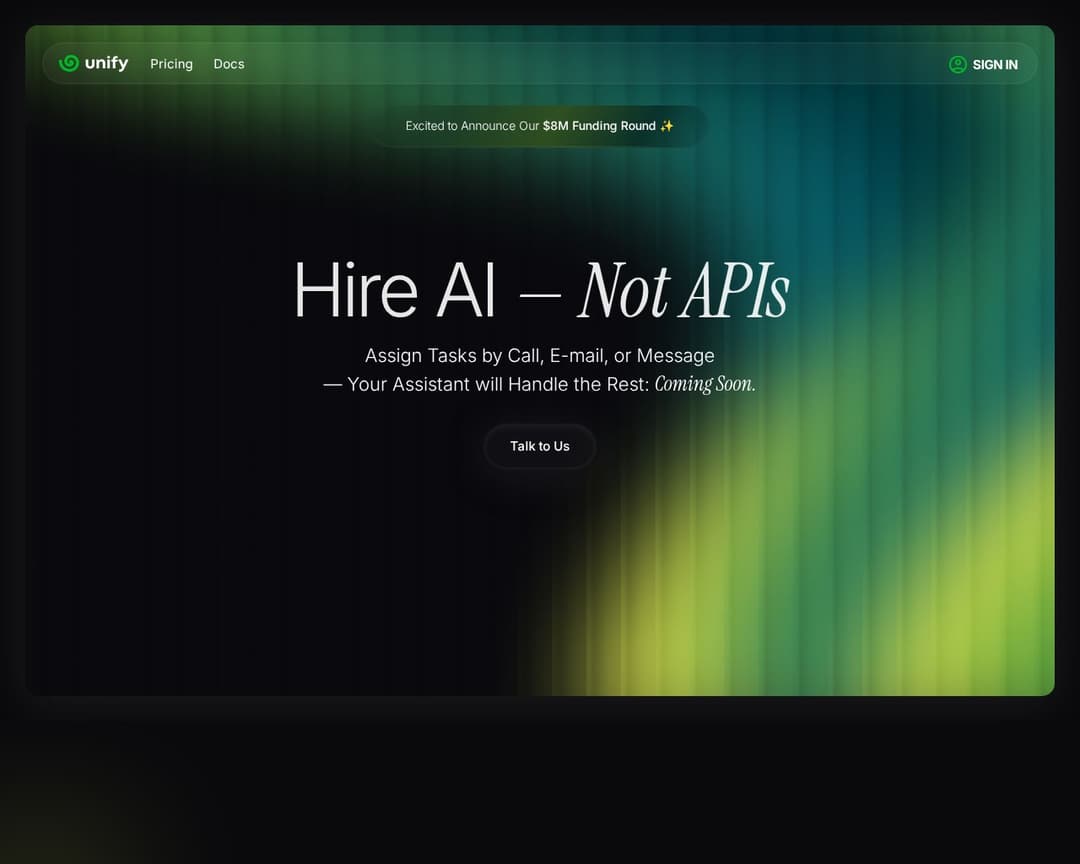Competitors
12
🚀
Discover 50+ More Competitors
This is just the tip of the iceberg. Unlock comprehensive insights into your competitive landscape.
Unlock Full ReportUnify is an LLMOps platform designed to help developers and teams build, customize, and manage AI assistants and applications. It provides tools for logging, evaluation, and optimization of large language models, offering a flexible and 'hackable' infrastructure for AI development.
2 of 5
Multi-Model Integration
User Authentication & Subscriptions
Guided Tool Interface
Creative Presets & Styles
Tool Catalog & Categories
1 of 10
Usage Analytics
Search & Filter
Favorites & History
Export & Integrations
Custom Prompt Templates
Collaboration & Sharing
Multi-Language Support
Mobile Responsive Design
In-App Resources & Tutorials
API Access & Developer Portal
Unify positions itself as an LLMOps platform for building custom AI interfaces and managing AI assistants, rather than a direct content creation playground with guided tools and presets for end-users. While it integrates with multiple LLMs and offers user authentication with different pricing tiers, it focuses on the infrastructure and development side of AI applications. The website content emphasizes 'building AI your way' and 'fully hackable LLMOps platform,' which suggests a more technical audience than the described 'Word.Studio AI Playground.' There's no clear evidence of a catalog of pre-built, guided tools for various content creation tasks or a library of creative presets for non-technical users. The 'Interfaces' mentioned in their documentation refer to custom interfaces built by users for logging, evals, etc., not a pre-defined set of content generation tools.

I've been using Alternative A for 6 months now and it's been fantastic. The pricing is much better and the features are actually more robust than what [Product] offers.
It handles edge cases much better and the API is actually documented properly.
Check it out at our site.
Honestly, after trying both, Competitor B wins hands down. Better customer support, cleaner interface, and they don't nickel and dime you for every feature.